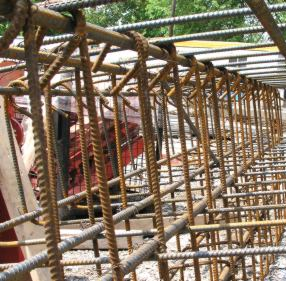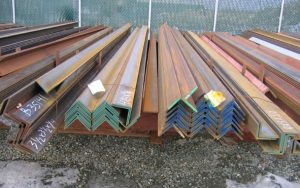The day before yesterday, I was invited at the Quai d’Orsay, where I participated in kicking off la diplomatie économique. Suggested by President François Hollande and implemented by Laurent Fabius, Minister of Foreign Affairs, the diplomatie économique aims at reaching trade surplus by 2017, not including energy. A number of French leaders were there, including Pierre Moscovici, Minister of Finance, Jean-Pierre Raffarin, former Prime Minister, François Delattre, Ambassador of France to the US, as well as a dozen of CEOs. Over coffee break, I was talking to a CEO of a leading software company based in Hong-Kong about disruptive innovation. I was surprised by his reaction.
I/ Who cares about disruptive innovation?
It seemed that he simply felt unconcerned. When he heard the word, he ignored it, and our conversation moved on to another topic. This wouldn’t be a problem if this kind of reaction was an exception. But, several weeks ago, I encountered a similar reaction. A General Manager informed me that he didn’t know who to call when he had an innovation problem. He said that the innovation consulting market is too fragmented and value propositions are unclear. Finding out who’s doing what is too time-consuming. This, he said, also applies to disruptive innovation: no one really know what it really means and why it’s so important. I guess there’s too much confusion around what the word means, what the value proposition is and why it matters for business. So this begs the following questions: how to create an interest in disruptive innovation? Why should anyone care about disruptive innovation?

Having already addressed the question of what disruptive innovation means in a previous post, I want to show why we should develop an interest disruptive innovation. The fact is that disruptive innovation is relevant to:
- CEOs who want to reach corporate growth and profitability targets
- Strategy and innovation VPs, who want to identify the most value-creating markets
- Financial analysts who have a tendency to incorporate in a company’s shareholder value its ability to drive both innovation and disruptive innovation businesses
And to make my case, I’ll use a couple of arguments, mainly from the steel industry. My first argument is:
Disruptive innovation is relevant to CEOs, Strategy and Innovation VPs and financial analysts because it can put them out of business.
Here’s how.
II/ The Steel industry provides an example of why CEOs ought to care about disruptive innovation.
At the end of the Second World War, the steel industry underwent major changes as a result of new technologies. Minimills were one of these new technologies. They used scrap steel and melt it in an electric furnace, as opposed to integrated mills which used high-quality steel and used a more expensive melting process. Minimills’ cost structure was, on average, 20% lower than integrated mills cost structure. However, minimills, melting steel of variable quality, produced steel of variable quality as well. That’s why, when minimills started out, they could only address market segments which were happy with low quality products such as the reinforcing bar market segment, also known as “rebar”. Rebars are used to reinforce steel in concrete constructions, as depicted below.

Meanwhile, exiting this market and leaving it to minimills seemed like good business sense, for integrated mills.
Indeed, margins are only 7% in the rebar market segment and it accounts for 4% of total market volume. Other market segments offer both higher margins of 12% and market volumes twice as big. So why should integrated mills invest in a market segment that’s less profitable than others? Why should they fight to protect their market share when they can address more profitable market segments? As a result, a few integrated mills moved upmarket to address more profitable market segments, such as the angle iron market segment.

IV/ While numerous integrated mills exited the rebar market, minimills invested the rebar market segment with alacrity.
Boasting a lower cost structure, the minimills were making handsome profits on the rebar market segment. But, in 1971, industry structure was profoundly altered. The last integrated mill still competing in the rebar market segment decided to exit the rebar market segment. So, the minimills were competing against one another. Having a lower cost structure made sense when they were competing against integrated mills whose cost structure was inherently higher. But now that minimills were competing against one another, it was a similar cost structure competing against a similar cost structure. This led to a price war, which hampered profitability. How could the minimills ever survive? How could they create a sustainable competitive advantage?
These are some of the questions that I’ll address next week. In the meantime, please feel free to provide your insights. How would you react had you been the minimills’ situation?
Further readings:
- For a historical account of the steel industry, please refer to J.P. Birat, Sidérurgie durable. Paradigmes de croissance et de progrès pour le début du XXIème siècle, la Revue de la métallurgie, 2001 (in French)
- For an analysis of minimills and how they were able to disrupt integrated mills, please refer to Clayton Christensen’s Innovator’s Dilemma, chapter 4
- For a discussion on the difference in production processes between minimills and integrated mills, please refer here.
- To get a perspective on the competition pitting minimills against integrated mills, please refer to this article.
[…] For a description of the issues on the definition of disruptive innovation, please refer here […]
[…] Ce qui est intéressant, c’est que c’est l’amélioration technique des produits qui semblent entraîner la faillite de ces entreprises. À cet égard, cet exemple correspond tout à fait au dilemme de l’innovateur qu’on a pu voir à l’œuvre au sein de l’industrie sidérurgique dont j’ai pu parler ici. […]
[…] sidérurgique au point de créer la faillite de ses acteurs principaux, veuillez-vous référer à ce […]